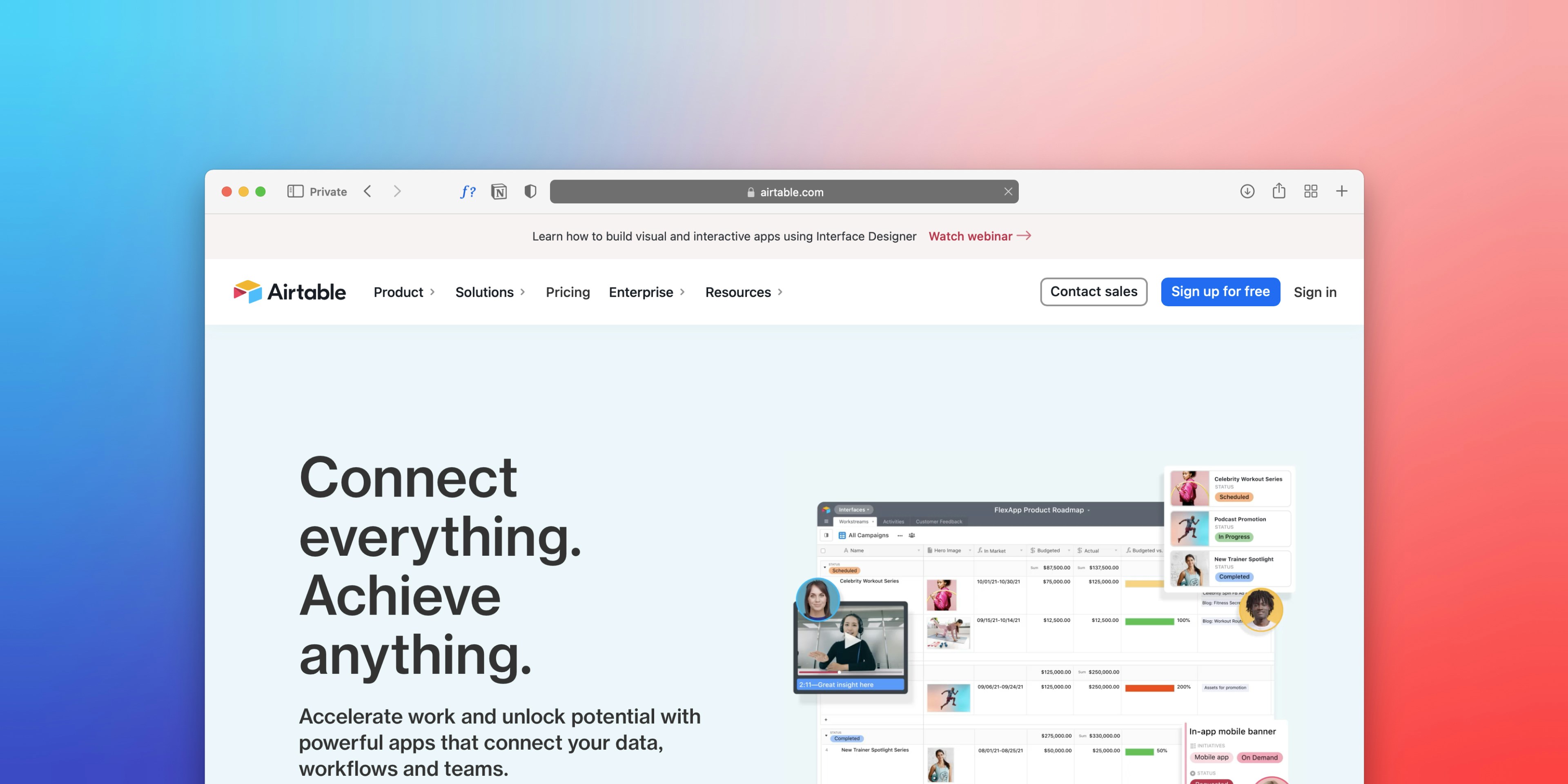-p-2000.png)


Why is UX Design Important for Business?

Do you find yourself hooked to a specific product or service?
The experience with a particular brand influences why users choose them over another. User experience is creating products that stand out from the crowd and drive ROI for the business.
In the following article, we delve deeper to understand the meaning of great user experience, and how your business can leverage it.
What is User Experience Design?
User experience design is creating products that provide meaningful, useful, and relevant experiences to users. It focuses on the entire customer journey and their interaction points.
It aims to address user pain points by providing them with a functional and practical product experience. Moreover, it focuses on adding value to the user and making their interaction more memorable.
What Makes a Great User Experience?
User experience differs from person to person. When designing a user experience, it is vital to understand and make it for your target audience. Understanding their needs, characteristics, and pains can help create a more inclusive experience. This will help ensure that the product or service is more useful and enjoyable for the user.
An effective way to make a great user experience is to ask your audience and not assume you know them. Speaking to your target audience can provide immense insights to improve the user experience.
How to Define a Great User Experience?
A great user experience seamlessly becomes a part of the user’s life. It has a short learning curve and seems effortless. A product or service that solves people’s problems and provides value contributes to a great user experience. Moreover, with changing times, user experiences must be more personalized and inclusive.
5 Reasons Why UX design is Important for Business
A good user experience can attract new customers and expand your business. On average, every dollar invested in UX brings $100 in return. Here are a few reasons why it is wise to invest in UX design:
1. UX design provides a competitive edge
User-focused design helps the product stand out. It attracts customers with its functionalities and usability. In some saturated markets, UX design can help brands stand out from the competition.
2. A good UX improves customer retention
According to Justin Mifsud, founder of Usability Geek, 88% of online consumers are less likely to return to a site after a bad experience. User-focused designs establish a two-way relationship with the customer. They provide more value and retain the business.
3. Investing in UX can reduce cost and save time
UX designers understand the target audience and business objectives before beginning design. It helps eliminate unnecessary rework and changes. It saves time and energy and helps businesses control the costs spent on changes.
4. UX design helps you create better products
A user-focused product is backed by research and user testing. It helps create products that seamlessly become a part of a user’s daily life. The products are functional and provide immense value to the user, without the need to tackle multiple bugs. Understanding the needs of the user, helps designers create better products.
5. A good UX can help increase your conversions
A user-focused product makes it easy for customers to use it. According to a PwC Report, 42% of people would pay more for a friendly, welcoming experience. As a result of a better customer experience, users are more likely to trust the product. They spend more time assessing the product, browsing other offerings, and eventually converting.
Our UX design experts can help!
Contact UsThe UX Design Process
Developing an effective user experience requires meticulous efforts and understanding. When the design process is user-focused, businesses learn more about their target audience.
Here are a few steps that you can follow to develop a memorable user experience:
1. Create a user profile

When you begin the UX process, it is necessary to understand your target audience. Conduct surveys, and interviews and analyze your website data. Create a fictional user persona that resembles your ideal customer. Provide them with names and personality traits to make it insightful.
2. Develop user flow diagrams
Create flowcharts to map the movement of users through a system. Define how they access the site or product and the various points of interaction. Understand the user and optimize the experience for them.
3. Create sitemap

A sitemap is a defined hierarchy of pages and subpages on a website. Developing a sitemap helps create a structure for the user journey. At this stage, you can eliminate unnecessary interactions and strive to make the experience seamless.
4. Create wireframes
A user will interact with the visuals more than a flowchart. Spend time creating wireframes and visual guides that provide a preview of your product’s final look. A wireframe also helps you eliminate unnecessary usability issues.
5. Develop a style guide
Consistency is critical in building a memorable user experience and brand. Develop a style guide that helps designers and writers to create using elements that align with the brand guideline. Ensure your team has access to the style guide and pick the right phrases or UI elements in the development process.
6. Develop a prototype
A prototype is a mockup of your final product. It helps you understand the product, identify issues, and resolve them before the launch. You may also use a prototype to collect feedback from users.
7. Conduct usability testing
A critical step in UX is testing how easy your product is to use. Use your prototype with real users to identify any issues. You can also collect user feedback and apply it to improve your product.

Our UX design experts can help!
Contact UsFAQ
Editorial Team
Publisher
Do you find yourself hooked to a specific product or service?
The experience with a particular brand influences why users choose them over another. User experience is creating products that stand out from the crowd and drive ROI for the business.
In the following article, we delve deeper to understand the meaning of great user experience, and how your business can leverage it.
What is User Experience Design?
User experience design is creating products that provide meaningful, useful, and relevant experiences to users. It focuses on the entire customer journey and their interaction points.
It aims to address user pain points by providing them with a functional and practical product experience. Moreover, it focuses on adding value to the user and making their interaction more memorable.
What Makes a Great User Experience?
User experience differs from person to person. When designing a user experience, it is vital to understand and make it for your target audience. Understanding their needs, characteristics, and pains can help create a more inclusive experience. This will help ensure that the product or service is more useful and enjoyable for the user.
An effective way to make a great user experience is to ask your audience and not assume you know them. Speaking to your target audience can provide immense insights to improve the user experience.
How to Define a Great User Experience?
A great user experience seamlessly becomes a part of the user’s life. It has a short learning curve and seems effortless. A product or service that solves people’s problems and provides value contributes to a great user experience. Moreover, with changing times, user experiences must be more personalized and inclusive.
5 Reasons Why UX design is Important for Business
A good user experience can attract new customers and expand your business. On average, every dollar invested in UX brings $100 in return. Here are a few reasons why it is wise to invest in UX design:
1. UX design provides a competitive edge
User-focused design helps the product stand out. It attracts customers with its functionalities and usability. In some saturated markets, UX design can help brands stand out from the competition.
2. A good UX improves customer retention
According to Justin Mifsud, founder of Usability Geek, 88% of online consumers are less likely to return to a site after a bad experience. User-focused designs establish a two-way relationship with the customer. They provide more value and retain the business.
3. Investing in UX can reduce cost and save time
UX designers understand the target audience and business objectives before beginning design. It helps eliminate unnecessary rework and changes. It saves time and energy and helps businesses control the costs spent on changes.
4. UX design helps you create better products
A user-focused product is backed by research and user testing. It helps create products that seamlessly become a part of a user’s daily life. The products are functional and provide immense value to the user, without the need to tackle multiple bugs. Understanding the needs of the user, helps designers create better products.
5. A good UX can help increase your conversions
A user-focused product makes it easy for customers to use it. According to a PwC Report, 42% of people would pay more for a friendly, welcoming experience. As a result of a better customer experience, users are more likely to trust the product. They spend more time assessing the product, browsing other offerings, and eventually converting.
Our UX design experts can help!
Contact UsThe UX Design Process
Developing an effective user experience requires meticulous efforts and understanding. When the design process is user-focused, businesses learn more about their target audience.
Here are a few steps that you can follow to develop a memorable user experience:
1. Create a user profile

When you begin the UX process, it is necessary to understand your target audience. Conduct surveys, and interviews and analyze your website data. Create a fictional user persona that resembles your ideal customer. Provide them with names and personality traits to make it insightful.
2. Develop user flow diagrams
Create flowcharts to map the movement of users through a system. Define how they access the site or product and the various points of interaction. Understand the user and optimize the experience for them.
3. Create sitemap

A sitemap is a defined hierarchy of pages and subpages on a website. Developing a sitemap helps create a structure for the user journey. At this stage, you can eliminate unnecessary interactions and strive to make the experience seamless.
4. Create wireframes
A user will interact with the visuals more than a flowchart. Spend time creating wireframes and visual guides that provide a preview of your product’s final look. A wireframe also helps you eliminate unnecessary usability issues.
5. Develop a style guide
Consistency is critical in building a memorable user experience and brand. Develop a style guide that helps designers and writers to create using elements that align with the brand guideline. Ensure your team has access to the style guide and pick the right phrases or UI elements in the development process.
6. Develop a prototype
A prototype is a mockup of your final product. It helps you understand the product, identify issues, and resolve them before the launch. You may also use a prototype to collect feedback from users.
7. Conduct usability testing
A critical step in UX is testing how easy your product is to use. Use your prototype with real users to identify any issues. You can also collect user feedback and apply it to improve your product.
Our UX design experts can help!
Button TextFAQ
Editorial Team
Publisher
Final Word
User experience design exponentially changes what you offer to your customers. It increases the value of your product, provides better returns, and changes lives. Great user experience requires meticulous work and market understanding.
Don't let your product get lost in the sea of competition. Contact our UX design experts to elevate the user experience of your product and make it truly stand out.




Hi, I'm Mike!
If you are enjoying the article, feel free to subscribe to our monthly newsletter.
If you have any project requirements, please contact us.




.png)









